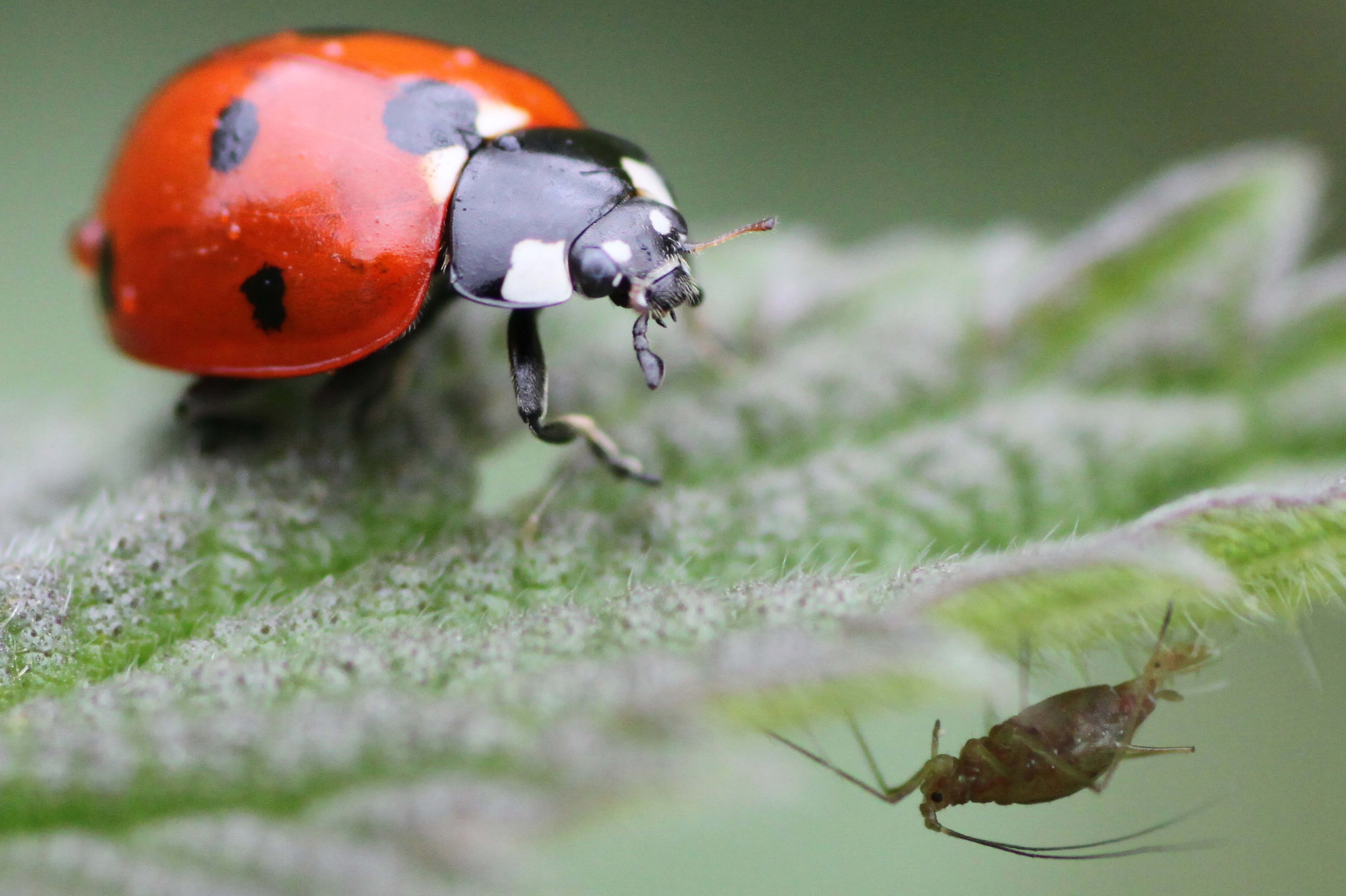Order
Beetles
Worldwide, beetles are the most diverse group of animals, with almost 400,000 known species. In the UK there are about 4,000 species. Beetles are robust and typically have thick wing-cases that usually cover most of the upper surface of the abdomen and conceal the hind wings.
Ladybird beetles are attractively coloured: they are also popular with gardeners because most of them feed on aphids. There are 46 species in the UK, and the commonest (and one of the largest) is the Seven-Spot Ladybird.
What do they look like?
The adult Seven-Spot Ladybird is 6-8 mm long. It is easily identified by the seven black spots on the bright red wingcases and the white patches on the front corners of the thorax just behind its eyes.
The closely related Scarce Seven-Spot Ladybird (Coccinella magnifica) is very similar but, as its name suggests, you are much less likely to see this species, which is usually only found close to the nests of wood ants.
Where do they live?
The Seven-Spot Ladybird feeds on a wide range of aphid species and is therefore found in a variety of habitats, including meadows, hedgerows and gardens.
Where can they be found?
This species is found in all parts of the UK.
When can you see them?
The Seven-Spot Ladybird is active from late spring through to autumn. In September and October, adults that have emerged from pupae during that summer find sheltered sites to overwinter, either individually or in groups of up to a dozen.
Life cycle
The eggs are bright yellow and are laid in batches of 10-50 on the underside of leaves among aphid colonies. They hatch after about a week. The larva feeds on aphids for about three or four weeks and then pupates for a week before the adult emerges from the pupal skin.
What do they do?
One Seven-Spot Ladybird eats about 5500 aphids in its life: 500 as a larva and 5000 as an adult. One of the biggest threats to a ladybird larva is another ladybird larva – cannibalism is common. The bright red and black pattern on the wing cases is an example of warning coloration – when disturbed, the Seven-Spot Ladybird produces a yellow fluid that tastes vile!
Did you know?
Even though the yellow fluid tastes so nasty, people in the past used to eat ladybirds to cure toothache: they believed that the fluid was a good pain killer!
The Seven-Spot Ladybird is one of several ladybird species that has been introduced into other countries to control crop pests. However, there are fears in the USA that such introduced ladybirds are displacing native species.
The name ladybird, referring to ‘Our Lady the Virgin Mary’, comes from the Seven-Spot’s colouring: the red represents her cloak, which was usually shown as red in early paintings, and the seven black spots were thought to represent her ‘seven joys and seven sorrows’.

